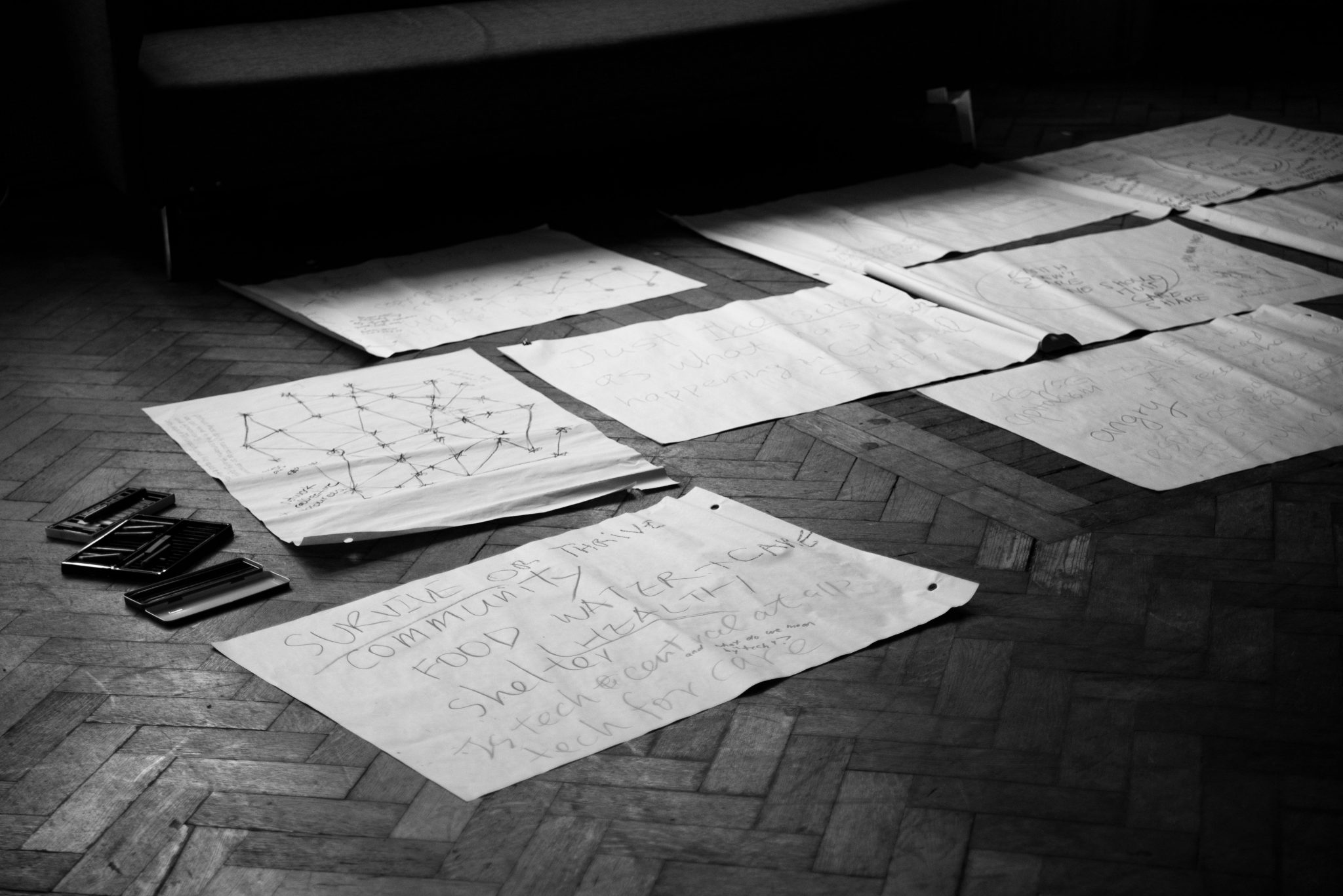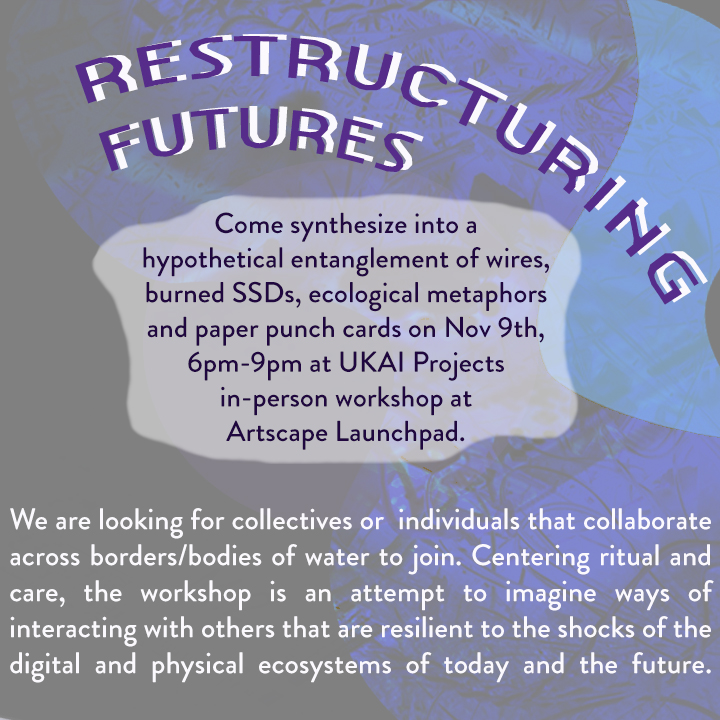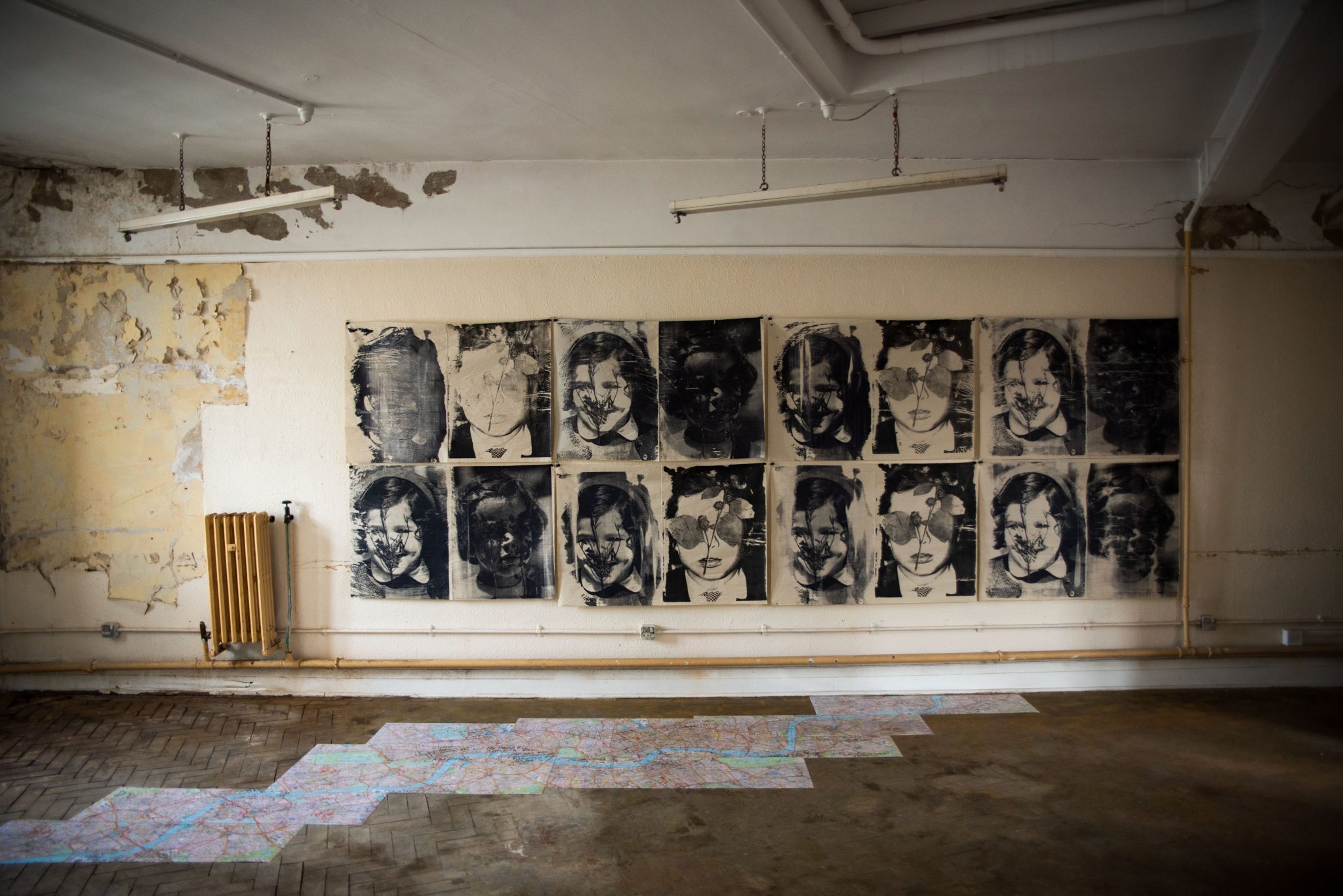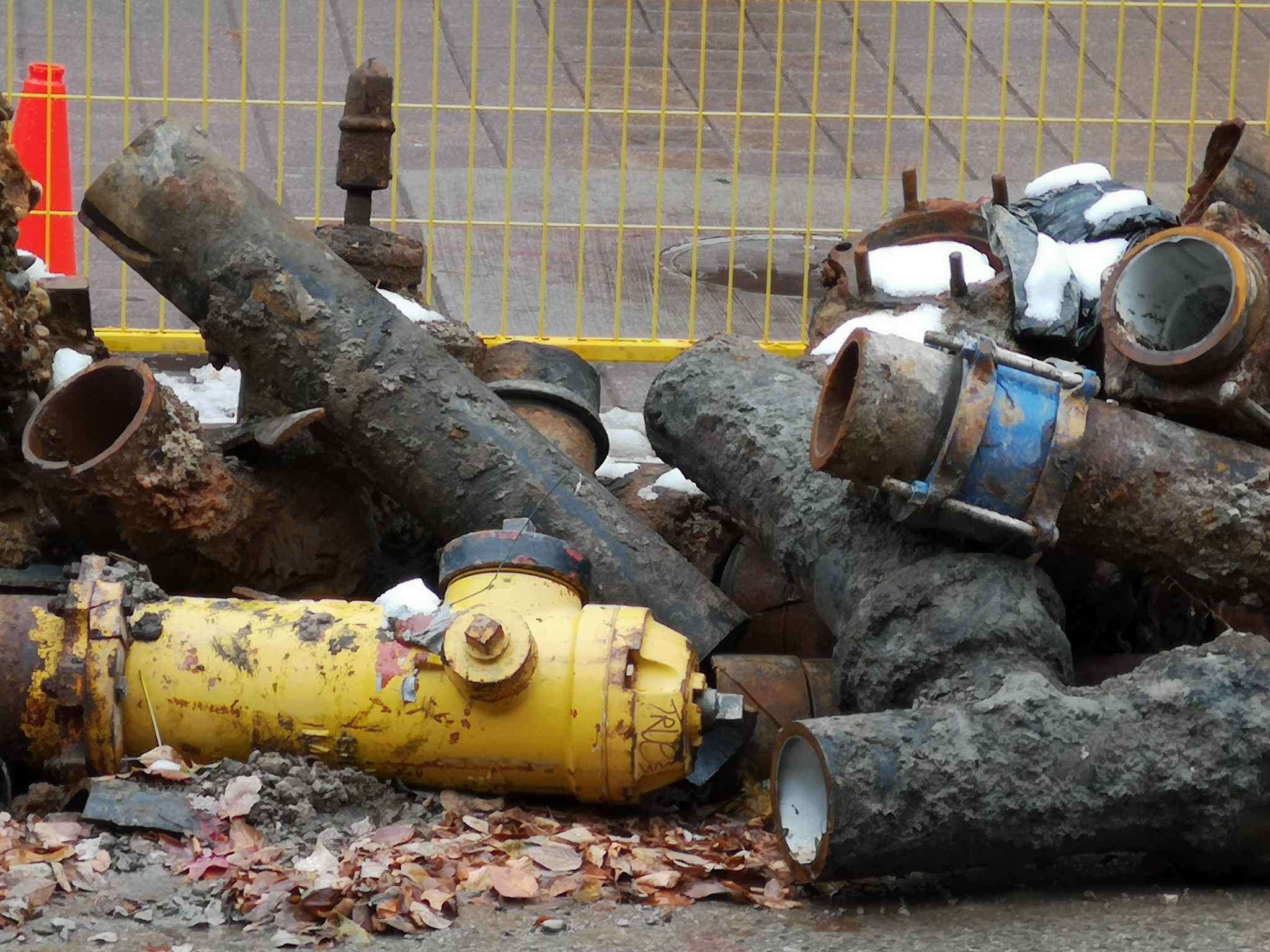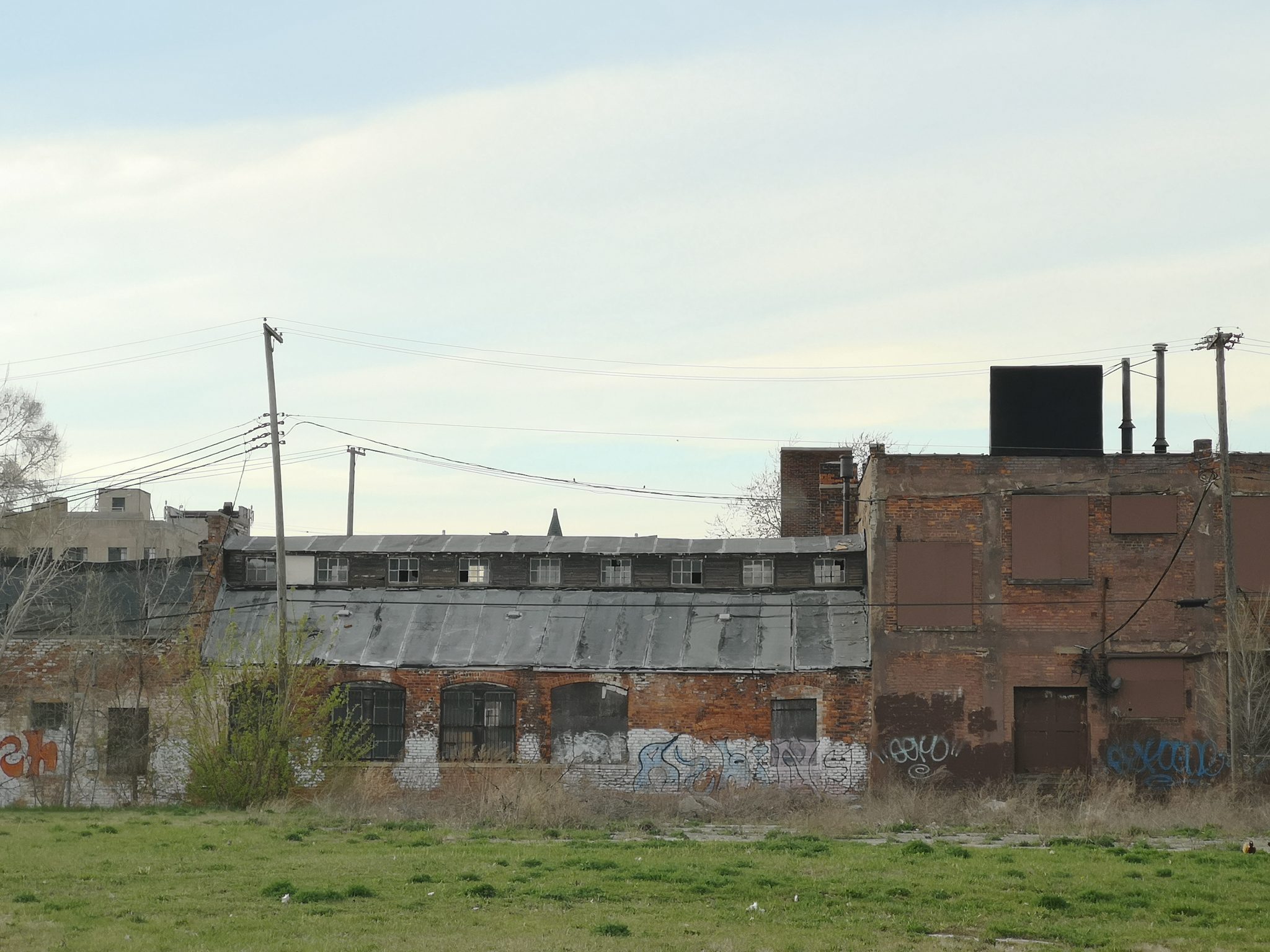Restructuring Futures
Overview
Restructuring Futures is a 2-year project to develop a shared collaborative workspace for asynchronous creation for cultural product and projects. The tools will be designed for the “culture that’s coming”, specifically to be resilient to political and ecological disturbances, rising authoritarianism and failures of centralized systems.
This 2-year project will culminate in a digital, asynchronous workspace that is fully functional and can be used by project partners in service to cross-boundary cultural production and planning. The project integrates research and prototype tools, processes, and systems to envision and operate a virtual collaborative environment embedded in alternative digital economies and emergent cooperative frameworks.
UKAI Projects, in partnership with the Laboratory for Artistic Intelligence and Hypha Worker Cooperative is prototyping and iterating solutions resilient to anticipated ecological and political disturbances such as failures of centralized systems, rising authoritarianism, and climate-related disasters. Existing UKAI partners outside of Canada are already experiencing these dislocations in Iran, Bangladesh, Kenya, Uganda, China, and elsewhere. We anticipate that volatility and disruption will increasingly define social and cultural systems and this project is designed and developed with those conditions in mind.
Ad hoc, imperfect, but working solutions are the goal — much like the way artists ‘hack’ together vibrant, alternative art spaces and communities in overlooked spaces offline.
Phase I concluded in September 2022 and Phase II is underway. Contact us to add your voice or to sign up as a tester going forward.
What are the challenges of working with artists and cultural producers experiencing ecological disasters and/or political authoritarianism? How do these challenges prefigure the kinds of barriers we will more broadly experience in the coming years?
The Restructuring Futures project is an ambitious undertaking, melding complex questions about tactility, presence, and spatiality with queries about alternative structures of artistic life-making. By seeking to confront the capitalistic assumptions underpinning our day-to-day digital communication tools, on behalf of artists, creatives, and collaborators, Restructuring Futures has opened multiple lines of inquiry, posed wicked questions, and drawn inspiration from myriad sources.
Phase I concluded in September 2022 and what follows is an attempt to piece together a picture of what was learned and how this will guide the project in the coming months. The story is presented here as linear, but like any design-driven, creative undertaking, the stages loop and progress simultaneously in a chaotic multi-layered stream of ideas, inputs, and explorations.
Gathering the Movement Material: Project Discovery
Process: administrative wrangling; desk research; virtual workshops; reading Bakhtin
Outcomes: project infrastructure; Miro board artefact; embodied understanding; thinking residencies
Restructuring Futures is a collaboration between the Laboratory for Artistic Intelligence, UKAI Projects and Hypha Worker Co-operative supported by a 2021-2022 grant from the Digital Strategy Fund at Canada Council for the Arts. The emergent nature of the multi-partner collaboration dictated that much of the early work was devoted to setting up the administrative underpinning of the project, developing a framework of methods, materials, and individuals that would carry the work forward into the subsequent months and years.
In addition to collaborating on partnership agreements and scopes of work, Hypha co-developed a Code of Conduct and contributed numerous project planning documents to kick-start the desk research and first round of Thinking Residencies.
The primary path of inquiry was to “research and prototype tools, processes, and systems to envision and operate a virtual artist-run centre within alternative digital economies and emergent cooperative frameworks.” Technical direction in this project is aimed at virtualizing embodied creation among artists, workshops, and events; the sharing of voices through decentralized means; the development of distinct currencies and alternatives to transactions, decision-making, ownership, and resourcing.
From Later, a foresight studio and frequent Hypha collaborator, led the Discovery Phase of the work by conducting desk research and hosting a series of ‘Thinking Residencies’ with key project informants to “guide framing and uncover new directions” and “to ensure that the project is informed by a wide range of ideas and discourses.”
During the four residencies, held virtually in fall of 2021, UKAI Projects led the partners and invited artists through a tour of the collective research and invited responses to probes in four areas: space, body, access & inclusion, and alternative economies. A collaborative Miro board was used to capture participants’ inputs and is a primary artefact from this phase of the work.
Site visits were conducted during the Discovery phase, interweaving a second understanding of embodied artistic creation. Project partners toured the Buddies in Bad Times theatre space to get a sense of how people way-find and sense-make inside a working studio space. This site visit was recorded to help inform the future prototype stage of the project.
When I go to a rehearsal, I have to physically transport myself there, if [I] take a cab I might review notes or finish off things so I don't have think about them when I get there; and when I get there I have to pass thru/walk thru the distillery district and storefronts and maybe artists that I know - and we say hi to each other and I say I gotta go, I've got rehearsal, and I arrive there but we're also not rushing b/c we know it's important to arrive = you have to land. So, all these transitional spaces are important, and then I get to the front door, taking off my scarves and maybe pick up a tea, then walk to the box office and check if they saved seats/tickets for my friends; then walk into the door of the studio and someone may be talking and I'm quietly taking off my shoes and say hello to friends.
Later in the spring of 2022, another site visit took place at Dancemaker’s much-loved dance studios in Toronto’s Distillery District. To experience the act of embodied artistic creation, this visit included making a short work based on an Indian style of music called Baul and involved an object that held memory for the participant. Both these experiences helped frame art-making in physical spaces, offering avenues of exploration for the subsequent convergent stage of the project.
The initial project discovery was informed by formal and informal connections with hundreds of artists, social activists, and collaborators. Participants in UKAI’s Ferment and Ferment AI collectives, the Maitri platform, and individuals involved in the Laboratory for Artistic Intelligence’s programming contributed rich and varied thoughts and impressions at this stage of the project.
Choosing the (Dance) Phrases: Synthesizing and Sense-Making
Processes: virtual meetings; note-passing; thread following; Cormorant fishing techniques
Outcomes: workshop synthesis; Proof of Concept brief; colour, music, and a view; a path forward
Following the residencies in autumn 2021, Hypha, project partners, and From Later met to discuss the affinities and themes that arose during the previous conversations. From Later presented seven key framings: memory and sensing; serendipity; affective atmosphere; liquidity without cash; interdependence, movement cues and rituals; and time and timing.
The themes that emerged from the residencies offered four ways to consider what the prototype might look like or how it might engage co-creators and participants. The areas of tool exploration gave structure to the technical requirements of the prototype. Alternative organizing structures and knowledge management possibilities were probed in this space as well.
But what other kinds of real-time interactions are possible? What if we had simply a dot, linked to our breathing, that expanded and contracted – a way to cue us to the presence of others without overloading it with semantic content. This would be an ambient presence – what kinds of situations could that be used for?
The vast amount of material generated in the first phase of the project, coupled with the dual focus of the project made the convergence process challenging. Which were the right avenues to follow toward creating a prototype? There were many possible starting points and as a result the focus on the embodied creation (i.e., a space for artists to gather and create online) superseded the focus on alternative economies. This direction became even more apparent during the subsequent creation of the prototype.
Creating the Structure: Proof of Concept/Prototype Development
Processes: bypassing pre-formed language, provocations and experiments, GitHub issue tracking, drawing hypotheses
Outcomes: ‘couscous’ proof of concept, sense of place, ghost avatars moving around, spatial audio tests
As 2022 began, so too did a new stage of the project: the development of the prototype or proof of concept (the two terms were used interchangeably). The goal was to have a working prototype ready for a second round of Thinking Residencies later in the winter. The requirements were numerous but three themes emerged to guide the work: serendipity, persistence, and aesthetics. These arose partly as a reaction against the dominant virtual meeting platforms, which utterly lack all these elements, and partly as values that many of the key informants held dear.
I desire a break from the dominant framings of productivity, efficiency, WORK, that dominate online productivity tools.
I enjoy in-depth one-on-one conversations, and how they can organically grow in size and nature when other people join our conversation. I like being in the flow of discovery and emergence.
I enjoy when there are “toys” around for me to pick up and be fun and silly with, with others.
Largely eschewing the original plan to present refined paper prototypes, the development team created a digital proof of concept based on Persian miniatures.
Participants’ video feeds appear as a moveable circle or avatar within the stylized two-story space. Inside the prototype, audio is presented spatially, so moving closer to a group of chatting people makes them sound louder.
This feature means that conversations happening in the main space are left behind as participants move into, for instance, Performance Studio #1. The ‘door’ closes, and the sounds of the new space become dominant.
The prototype was tested by Hypha and project partners in the week leading up to the second round of residencies, but like many bits of code before it, the prototype failed to perform as requested. Participants with older operating systems experienced intermittent video and audio connectivity, resulting in a ghost-like experience where voices could be heard after the avatars had left the space. In other cases, video feeds flickered in and out, wraith-like, as people navigated through the halls and rooms.
The prototype, current state, offers outlines of some of the key features; the ability to ‘pin’ something to the bulletin board, and have it persist between sessions is hinted at by the presence of a gray square on the wall; art is hung, waiting to spark a serendipitous conversation. But largely, the prototype is merely context for conversation, rather than a functioning space for artistic creation; simply an outline to be coloured in by the participants in the Thinking Residencies.
Dress Rehearsal: Second Thinking Residencies & Prototype Testing
Processes: learning/unlearning, time zones, algorithmic extremes, spawning points
Outcomes: feedback and frustrations, organic AI theories, linear vs circular phenomenologies of time, ruminations on Water Hyacinth
Two Thinking Residencies took place in late April and early May 2022; the first with a group of people involved with the Maitri Platform and the second with artists and mentors involved in BEING Studio; both residencies were facilitated by UKAI Projects. Members of the Laboratory of Artistic Intelligence and Hypha participated as scribes (note-takers) to understand how the groups collaborated and created in virtual spaces.
The first session of each residency focused on experimenting with the prototype and gathering thoughts and perspectives on how it functioned and what future affordances would be welcomed. Given a host of access and connectivity issues with testing out the platform – several of the residents were joining from China, Uganda and Kenya – much of this discussion was speculative. But the session still elicited some fun and thought-provoking ideas; such as the Seed AI, imagined as an AI ‘planted’ inside the virtual space that learns and grows alongside the community:
The second residency, which included differently-abled artists from BEING Studio, offered another set of considerations when using the prototype. Although the avatars can be moved in the digital studio using arrow keys, this wasn’t immediately intuitive to all participants and offered a reminder to start slowly when presenting any new technology, digital or otherwise.
The residencies generated much useful input for the upcoming second phase of the project, but there were also a few notable detours away from the original lines of inquiry. Most obviously, neither of the residencies asked the participants to create ‘some thing’ embodied or otherwise.
And although the international, decentralized Maitri Platform is inherently an alternative mode of operating and organizing, discussions about alternative economies were peripheral to the primary conversations during the residency. Despite this, these virtual gatherings offered a chance for Hypha to observe interactions within the confines of the prototype and Zoom, which was the default meeting space after the prototype testing was complete. Two and a half years into a global pandemic, most people are well used to navigating in virtual environments, so much so that much of our video conferencing habits are automatic. The residencies provided a chance to step back and consider how serendipity, persistence, and aesthetics can be woven into even the most banal of video boxes.


